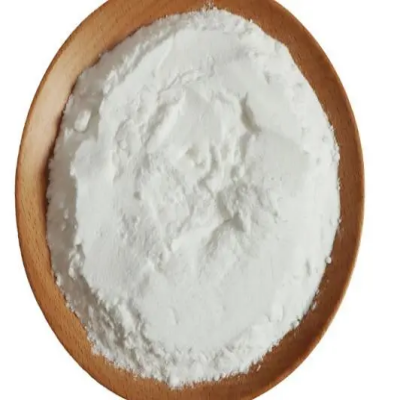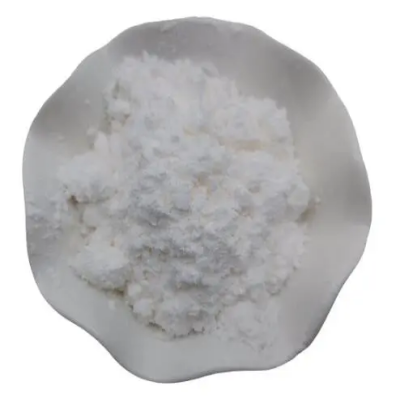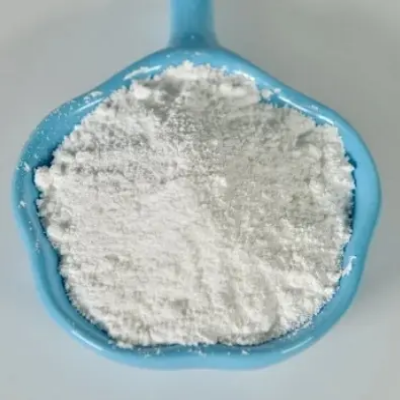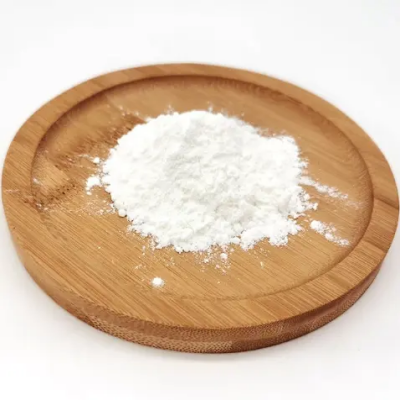-

D(-)-lacticacid CAS:10326-41-7
D(-)-lactic acid is a type of lactic acid that exists in the optically pure form, with a specific rotation to the left. It is a colorless, odorless, and water-soluble compound. D(-)-lactic acid is found naturally in certain foods like fermented vegetables and dairy products. This organic acid is used in various industries for its properties and applications.
-

Cyanamide CAS:420-04-2
Cyanamide is an organic compound with the chemical formula H₂NCN, consisting of amino and nitrile functional groups. It is a white crystalline solid that is soluble in water and commonly used in organic synthesis and agriculture. Cyanamide has diverse applications due to its reactivity and ability to participate in various chemical reactions.
-

butyllactate CAS:138-22-7
Butyllactate, or butyl lactate, is a chemical compound derived from lactic acid with a butyl group attached. This ester is a colorless liquid, known for its pleasant, mild odor. Butyllactate is recognized for its biodegradability and is used in various industrial and consumer applications due to its effective solvency and safety profile.
-

4-Chlorophenylhydrazinehydrochloride CAS:1073-70-7
4-Chlorophenylhydrazinehydrochloride, abbreviated as 4-CPH, is a white to off-white crystalline solid. It is primarily utilized as a building block in organic synthesis, especially in the pharmaceutical industry. This compound is known for its ability to react with carbonyl compounds, making it valuable in the production of various pharmaceutical intermediates. Additionally, 4-Chlorophenylhydrazinehydrochloride is also employed in research settings for its role in studying organic reactions and as a reagent in chemical analysis.
-

Fumedsilica CAS:7631-86-9
Fumed silica, also known as pyrogenic silica or silica fume, is an ultrafine amorphous form of silicon dioxide produced through the combustion of silicon tetrachloride in a flame. It appears as a white, fluffy powder consisting of nanoscale particles with high surface area and porosity. Fumed silica is widely used as a reinforcing filler, thickening agent, and flow control additive in various industrial applications.
-

Ferrocene CAS:102-54-5
Ferrocene is an organometallic compound with the chemical formula Fe(C5H5)2, consisting of a central iron atom sandwiched between two cyclopentadienyl (Cp) ligands. It is a distinctive orange solid that was one of the first metallocenes discovered, marking the beginning of the field of organometallic chemistry. Ferrocene exhibits remarkable stability and has garnered significant attention for its unique molecular structure and diverse reactivity in synthetic chemistry.
-

Ethylpyruvate CAS:617-35-6
Ethylpyruvate is a chemical compound derived from pyruvic acid, with an ethyl group attached. It is a colorless liquid with a fruity odor. Ethylpyruvate is used in various industrial and research applications due to its unique properties.
-

Ethylheptanoate CAS:106-30-9
Ethylheptanoate is an ester compound formed from heptanoic acid and ethanol, giving it a fruity odor. It is a clear liquid used in various applications due to its distinct characteristics.
-

Butylbutyryllactate CAS:7492-70-8
Butylbutyryllactate is a chemical compound derived from lactic acid and butyric acid, featuring a butyl group and a butyryl group attached to a lactate moiety. This ester compound is utilized in various industrial and research applications due to its unique chemical composition.
-

Oxacillin sodium salt CAS:1173-88-2
Oxacillin sodium salt is a narrow-spectrum beta-lactam antibiotic belonging to the penicillin class, specifically classified as a penicillinase-resistant penicillin. It is structurally similar to methicillin and nafcillin and is effective against penicillinase-producing staphylococci. Oxacillin disrupts bacterial cell wall synthesis by inhibiting cross-linking of peptidoglycan, exerting bactericidal effects against susceptible organisms. Available in injectable formulations for intravenous or intramuscular administration, oxacillin is commonly used in healthcare settings for the treatment of infections caused by penicillinase-producing Staphylococcus aureus strains.
-

Oxytetracycline hydrochloride CAS:2058-46-0
Oxytetracycline hydrochloride is a pharmaceutical salt form of oxytetracycline, a broad-spectrum antibiotic belonging to the tetracycline class. It shares the same mechanism of action as other tetracyclines, inhibiting bacterial protein synthesis by binding to the 30S ribosomal subunit. This bacteriostatic action makes it effective against a wide range of gram-positive and gram-negative bacteria. Oxytetracycline hydrochloride is commonly used in various pharmaceutical formulations for both human and veterinary medicine.
-

Pazufloxaxin CAS:127045-41-4
Pazufloxacin is a fluoroquinolone antibiotic with broad-spectrum activity against various gram-positive and gram-negative bacteria. It inhibits bacterial DNA synthesis by targeting the enzymes topoisomerase IV and DNA gyrase, leading to bactericidal effects. Pazufloxacin is used in the treatment of various infections, including respiratory tract infections, urinary tract infections, skin and soft tissue infections, and intra-abdominal infections. It is available in oral and injectable forms for effective management of bacterial diseases.

